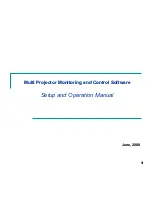
Ethernet 1000BASE-X PCS/PMA or SGMII v9.1
www.xilinx.com
73
UG155 March 24, 2008
Ten-Bit-Interface Logic
R
Virtex-4 Devices
Method 1
The Virtex-4 FPGA logic used by the example design delivered with the core is illustrated
in
Figure 6-4
. This shows a Virtex-4 device
IDDR
primitive used with the
DDR_CLK_EDGE
attribute set to
SAME_EDGE
(see the
Virtex-4 FPGA User Guide
). This uses local inversion of
pma_rx_clk0
within the IOB logic to receive the
rx_code_group[9:0]
data bus on
both the rising and falling edges of
pma_rx_clk0
. The
SAME_EDGE
attribute causes the
IDDR
to output both
Q1
and
Q2
data on the rising edge of
pma_rx_clk0
.
For this reason,
pma_rx_clk0
can be routed to both
pma_rx_clk0
and
pma_rx_clk1
clock inputs of the core as illustrated.
Caution!
This logic relies on
pma_rx_clk0
and
pma_rx_clk1
being exactly 180
degrees out of phase with each other since the falling edge of
pma_rx_clk0
is used in place
of
pma_rx_clk1
. See the data sheet for the attached SERDES to verify that this is the case.
The IDELAY elements can be adjusted to fine-tune the setup and hold times at the TBI IOB
input flip-flops. The delay is applied to the IDELAY elements using constraints in the UCF;
these can be edited if desired. See
“Ten-Bit Interface Constraints” in Chapter 12
for more
information.
Figure 6-4:
Ten-Bit Interface Receiver Logic - Virtex-4 Device (Example Design)
component_name_block (Block Level from example design)
pma_rx_clk0
IBUFG
IOB LOGIC
IPAD
rx_code_group[0]
IBUF
IPAD
Ethernet 1000BASE-X PCS/PMA
or SGMII LogiCORE
pma_rx_clk0
BUFG
IOB LOGIC
pma_rx_clk1
rx_code_group0[0]
rx_code_group1[0]
rx_code_group1_reg[0]
rx_code_group0_reg[0]
IDDR
Q1
D
Q2
C
IDELAY
IDELAY
















































